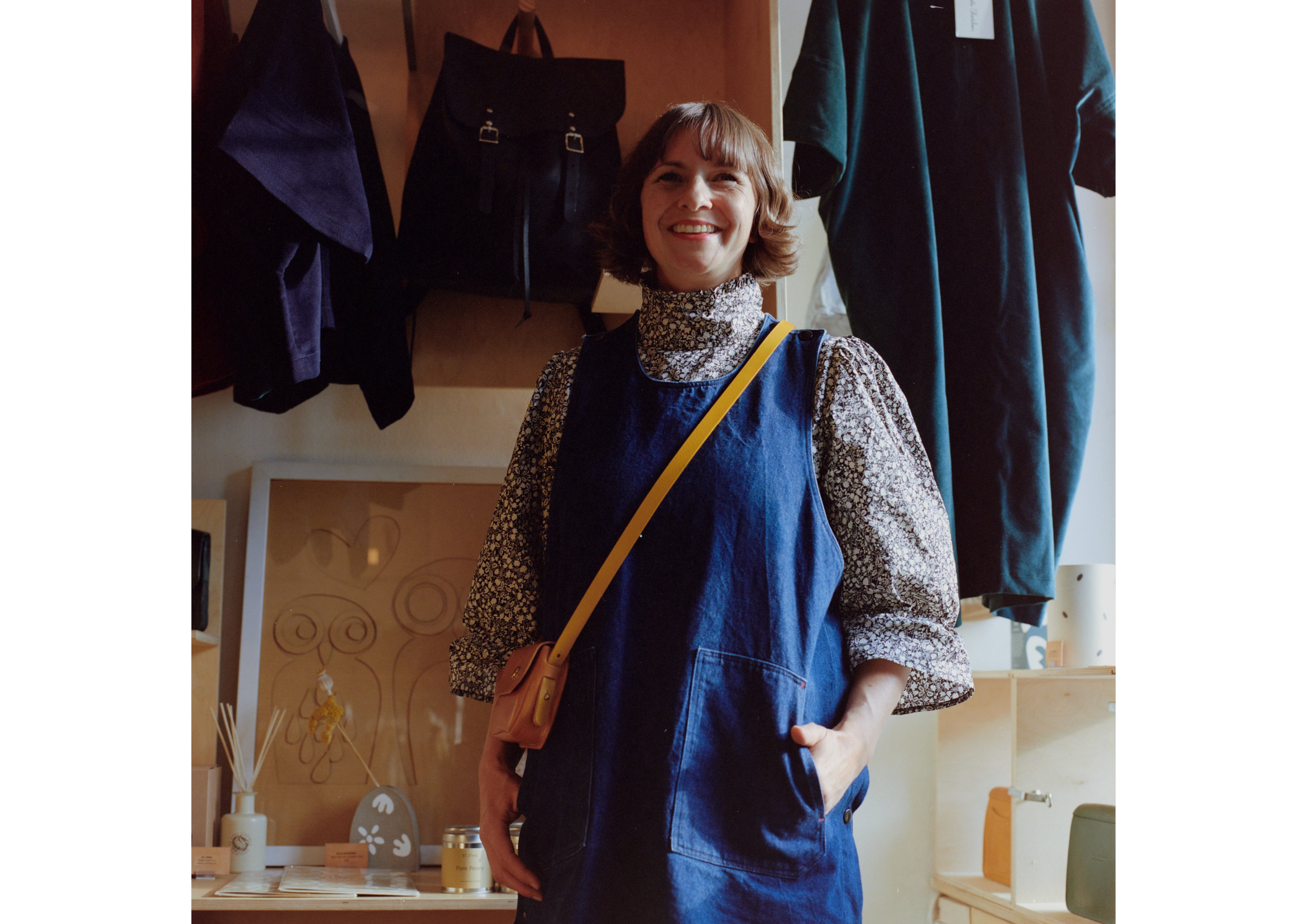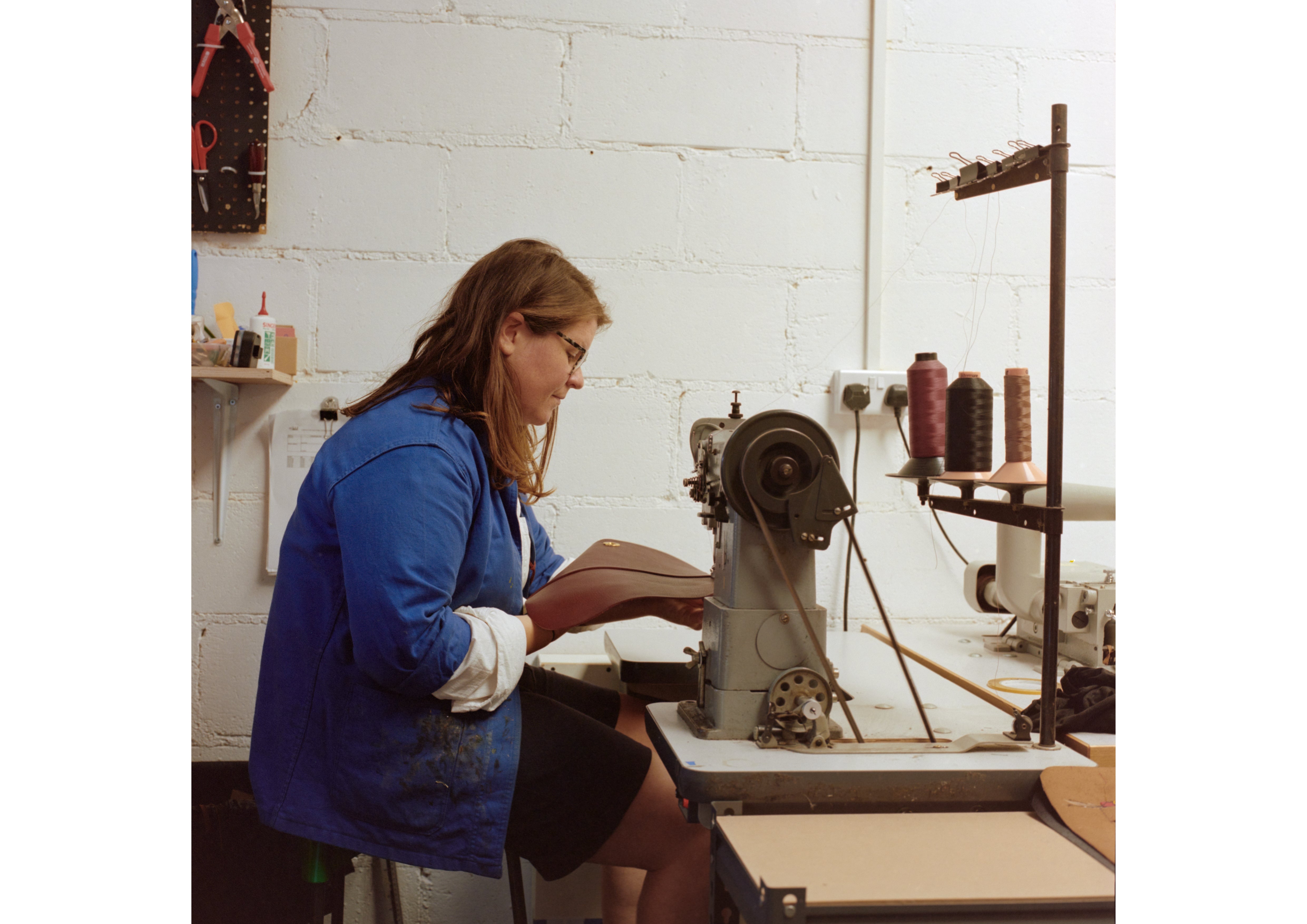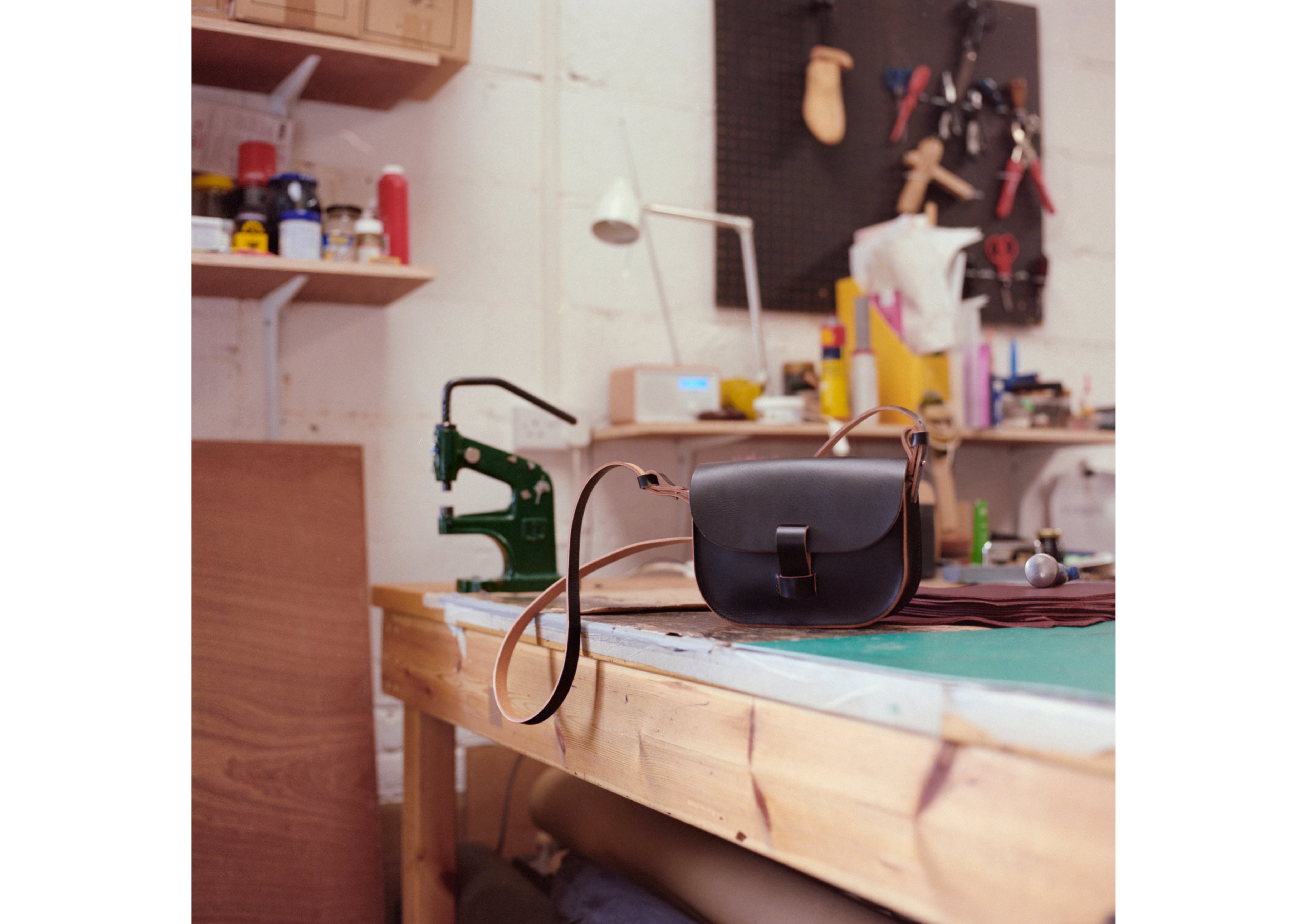
Since early civilisation humankind has worked with leather. This durable, natural material has been used for centuries, crafted into everything from shelters, saddles and furniture, to clothing and shoes.
Kate Sheridan is a British Designer specialising in quality leather goods made using traditional techniques. From a young age Kate has been fascinated with the material and now makes simple, functional bags from fine quality Italian leathers.
Based in a workshop in Clapton, many of Kate's designs are created in house with the rest produced in small leather factories in Margate and Suffolk. Kate is proud to be part of the UK leather industry and the community that surrounds it.
We asked Kate about the future of British leatherwork, the benefits of vegetable tanning and some of her new designs for the TOAST collection.
Can you tell us about your East London workshop?
I am in Clapton in Hackney, which is conveniently a ten-minute cycle from home. The studio is a shop, office and workshop all in one, which means that customers get to see us making our bags. It's a lovely way of communicating the craft and skill that goes into each piece. Once a month we open up the workshop to customers for an evening class, where everyone gets to make their own custom leather bag.
What tools are essential for a day at the studio?
My favourite leather working tool is my strap cutter. It was such a joy when I discovered that I no longer had to cut lengths of leather with a blade and ruler. When we are in the midst of a production run we couldn't do without our rivet machine. For our in-house AW20 production alone, we will have squished 5,096 rivets!

Alongside your London-based workshop, you also work with small leather factories around the UK. Can you tell us a little about this relationship?
We are proud to work with three UK manufacturers and have a very close working relationship with them. Working closely is integral to us and ensures that we can deliver the best possible product.
Hannah is based in Margate and she and I have been working together since before she even had her own factory. She is an absolute joy to work with and has a wonderful attention to detail. She really understands my brand.
Amy's factory is another really impressive one-woman operation based in rural Suffolk. She's a proper problem-solver who always manages to get things done on time, and most importantly, executed beautifully.
Jag's factory is around the corner from the studio here in East London, and is a local hub for the leather crafting industry, where we often end up whiling away time gossiping, using his machinery and chatting to his skillful team.
Visiting any three of these factories is absolutely one of my favourite parts of my job, and spending time with my makers ensures I understand their working environment. During lockdown these relationships really came into their own as everyone pulled together and rose to the new challenges of how to meet delivery obligations. I can't thank them enough.

Can you tell us about your latest pieces for the TOAST collection?
This season's bags draw on shapes and styles that have been inspiring me since I began making bags with Sheridan & Minns over 18 years ago! I have always been drawn to minimal yet functional styles. The simplicity and practicality of the A20 Lock, Loop and Pop Bags have a really pleasing echo with the past.
Meanwhile, the vibrant colour palette and the bag shapes are very much informed by recent travels to Marrakech, which have begun to frame the design path I'm moving forward with now.
The rich colours of chocolate brown, petrol, plum are all achieved through vegetable dyes. Can you explain a little about this process and the benefits of natural tanning?
Vegetable tanning is one of the oldest methods of tanning which has been around for centuries. The process of vegetable tanning uses natural tannins derived from barks, leaves, fruits, berries, plant roots and wood. There are around 300 different plant species worldwide that can be used for tanning.
Unlike the more common practice of chrome tanning which uses machines and harmful, toxic chemicals, vegetable tanning relies on natural materials and human skill. This makes it kinder to the environment and offers huge improvements to the health of the tannery workers, and also means it is suitable for people with sensitive skin.

Through minimal design and high quality materials, Kate Sheridan bags are built to last. How do your bags change over time?
Natural, full grain vegetable tanned leather gets better with age. With exposure to the elements, the leather takes on its own unique life. Generally, vegetable tanned leather will darken over time and it develops its own unique patina that is inherent to the character of this wonderful leather. Because it is a natural product, all the hides have small differences and no one skin of leather is exactly the same, which is what makes this material so special.
The surface changes depending on the mix of tannins and any finish on the surface of the leather combined with the different elements that it is exposed to. Essentially, the more you use your bag in all environments, the more stories it can tell and the more individual it becomes.
What draws you to leather as a material?
Leather is a very sustainable material, as all skins used are a by-product of the food industry. So the tanning industry plays a key role in the recovery of waste from the meat and dairy sector. Animal husbandry and animal welfare are at the heart of the Italian tanneries we work with. Ever since I began working with leather it became clear to me that the better the animals are looked after, the better the leather.
Instead of these skins becoming waste products, they can be transformed into beautiful hides with myriad uses. A well made leather bag can last a lifetime and can be passed down through the generations. It is biodegradable and doesn't leave a trace when it comes to the end of its time. Versatile, hardwearing and a joy to work with vegetable tanned leather has a wonderful woody scent, which now also characterises the smell of the workshop and is often commented on by customers.

How do you see the future of UK leather manufacture?
The decline in skilled leather manufacturing and consequential closure of factories in the UK has sadly been a reality throughout the period of my career. I would love to see young people being actively encouraged to take part in leatherwork apprenticeships. So I've been working hard to integrate this as a practical element of my next year's plans.
I would love to see the business becoming a place that can help to inspire and teach, by incubating a new generation of leather crafters and designers. By doing this we can revive our rich tradition of skilled manufacturing in East London and one day, the rest of the UK.
Photography by Chris Ower-Davis.
The Kate Sheridan Mini Pop Bag, Celeste Lock Bag and Loop Bag for TOAST are all made by hand from an Italian vegetable tanned leather.

Add a comment
1 comment